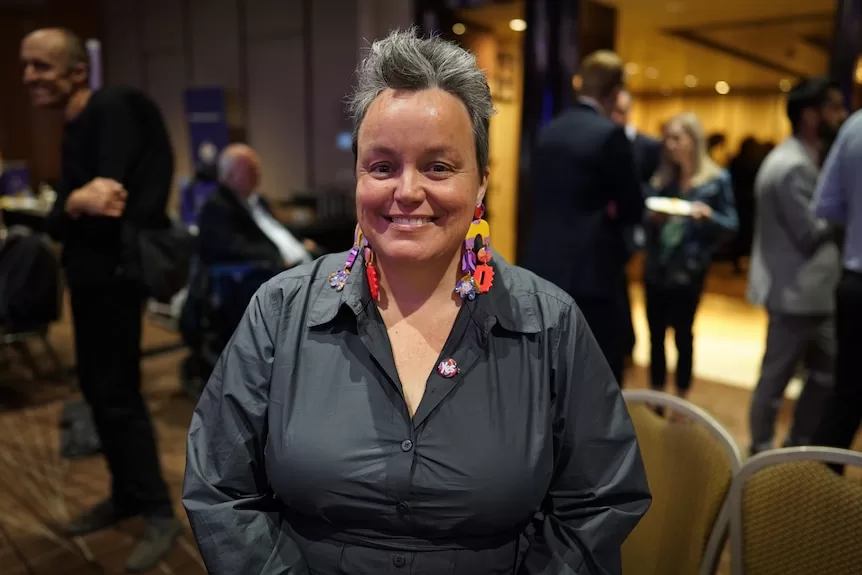- In short: The federal government has released a draft of a strategy it hopes will improve the lives of autistic Australians.
- Feedback will inform a more coordinated, national approach aiming to better support autistic people at each stage of life.
- What’s next? Public consultation is open until May 31, 2024.
Whether it’s your son or daughter, sibling, partner, friend or colleague, chances are you know an autistic person.
From stigma to lack of support and a decreased life expectancy, the challenges they face can be huge.
But when the environments and people around them make it possible, they can thrive.
A new draft national autism strategy has just been released, aiming to help shift the dial so the community can live, work and play like everyone else.
What is the strategy and what is it trying to do?
Make life better for autistic Australians, basically.
To get to this draft stage, autistic people and their families, researchers and other stakeholders were asked what would help improve outcomes for autistic people across all stages of life.
Four key areas have were identified:
- social inclusion
- economic inclusion
- diagnosis, services, and support, and
- health and mental health
Now the government wants more community feedback before it decides on specific reforms.
Clare Gibellini, who is autistic and the co-chair of a strategy oversight group, says it’s a historic moment for the community.
“It’s person-centred. It looks at our strengths, rather than things we can’t do. It’s trauma-informed and it’s guided by our own lived experience,” she says.
It’s hoped the strategy will ultimately lead to a greater understanding of autism across the community, help make education and employment more inclusive, and provide better support for parents and carers.
Ms Gibellini is also hopeful having a national strategy will go some way in helping autistic people feel heard.
“It’s time to acknowledge that being autistic doesn’t mean we’re flawed or broken and need to be fixed. It’s also time to work towards preventing anything that seeks to erase autistic identities.”
Why is a national strategy needed?
Outcomes for autistic Australians are much poorer than for the rest of the population. More on that in a bit.
The lack of a national approach has also led to inconsistencies across the country when it comes to inclusion and support.
Do you have a story to share? Email Specialist.Team@abc.net.au
Countries including England, the United States and France already have national autism strategies.
Domestically, South Australia provides a model. It became the first jurisdiction to appoint an assistant minister for autism when Emily Bourke took the job in 2022.
She welcomes the prospect of a national autism strategy, and since taking up the portfolio has been able to implement several initiatives.
“We’re now the first in the nation to have autism inclusion teachers in our public primary schools,” she says.
What are the stats on autism?
WARNING: This section contains references to mental health and suicide.
The number of Australians with an autism diagnosis has surged in recent years.
It’s thought at least 200,000 Australians have an autism diagnosis, though the true number of autistic people is likely to be much higher. That could be attributed to several factors, including the time and cost of getting a diagnosis.
Every autistic person is unique. Autistic people can have a wide variety of abilities and significantly different support needs — some may require occasional speech therapy while others may need round-the-clock care.
The life expectancy of autistic people is 20 years less than the general population and are nine times more likely to die by suicide, according to the Department of Social Services (DSS).
Autistic people are almost eight times more likely to be unemployed and they are at a higher risk of homelessness and violence, according to the department.
About 95 per cent of autistic Australians also have other disabilities or neurodivergent diagnoses.
Out of 646,449 participants on the National Disability Insurance Scheme (NDIS), 230,119 — or 36 per cent, the highest proportion on the scheme — have autism listed as a primary diagnosis, according to the most recent quarterly report.
Autistic participants, particularly children, have been joining the scheme in rising numbers. Campaigners say that’s due to a lack of support elsewhere.
What happens next?
The government says it will continue to work with the oversight council, working groups and the autistic community to develop an action plan.
That, along with the final strategy, is expected to be released by the end of 2024.
Public consultation is now open via the DSS Engage website and closes Friday May 31, 2024.
Given the strategy is the first of its kind, Ms Gibellini acknowledges there will be gaps.
But she’s confident further consultation with the community will help pick up on those missing pieces.
“I really want people to get involved … to be open and honest [and say] whether or not they think it’ll be effective in improving outcomes,” she says.
“There should be no policy developed that impacts our lives without us having a seat and an equal voice at the table.”
Beth Radulski, an autistic autism researcher at La Trobe University, is upbeat about what the strategy could achieve.
“Society is built to benefit people who are abled and neurotypical,” she says.
“[We need to look at] how are our environments built, what are the lighting and sound factors that are present in those environments, how that impacts sensory processing [and] how are our workplaces organised.”
Loading…
